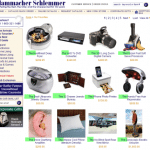When new prospects visit your wellness website, do they see content and links purposed to help them take action?
Or do they find themselves awash in hundreds of re-posted articles about the “obesity epidemic” that cause more fear and confusion than action? Do they see a list of three payment plans for your “6-week beginner yoga class” but no evidence of when it’s taught, how many people are in the class, or what’s appropriate to wear? Does the website show real customers or super-thin stretchy people in difficult poses? Does that draw them in or drive them away?
Every little bit matters. These days, websites—and wellness websites in particular—need to be simple, understanding, and directive.
Prospective customers are looking to change their lives, and want to see your brand as a means of making that change. But they’re looking for information that’s not overwhelming, advice that meets them where they are, bite-sized steps that can be taken immediately. So in that spirit, here are five things you can do to help your wellness website guide each prospect’s click.
1. Eliminate choices. If your Piloxing class is “all that and a bag of gluten-free, low-carb chips,” you don’t need multiple online payment options. If the default option doesn’t suit them, let customers know other options are available, then contact them to follow up.
2. Cherry-pick your copy. Your goal is just enough plain and simple language to say what you need to say and give prospects a way to take the next step.
3. Dole out information in bite-sized chunks. Contemplators often want to know “just a little more” before buying. So tell them just a little more.
4. The prospect is at your site because they already think of you as an authority; use it to guide behavior. Delete anything that doesn’t help customers take action. Now is not the time to hammer home your certifications or vent your opinion about the dangers of inactivity.
5. Leverage what’s left after Spring cleaning. Once you get rid of extraneous links, content and navigation options that don’t produce desired behavior, your web pages now must do double duty: informing and guiding the customer to the right choices, then making it easy to act.
A smart wellness website leaves nothing to chance. When there’s a reason for everything and there’s nothing to do but click where you want them to, customers will find it easier to do business at your website.




